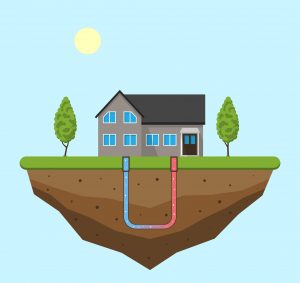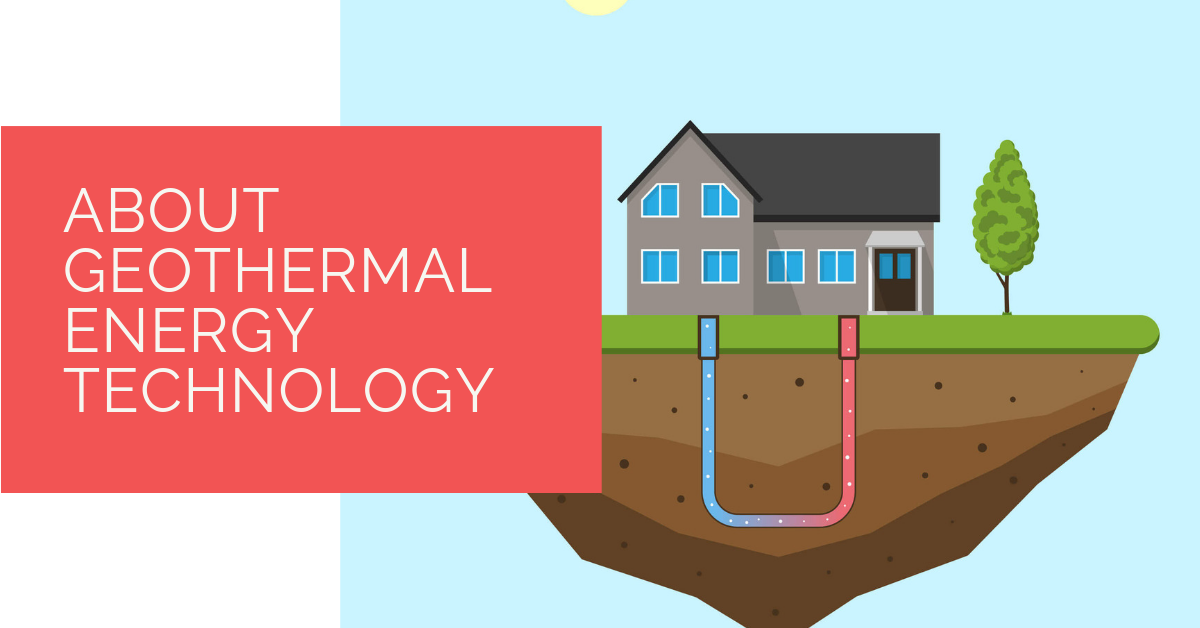The Earth produces a certain amount of heat. We call this geothermal energy. In the ground for the first 3 meters, the temperature of Earth keeps a constant temperature of between 10 to 16 degrees Celsius. With the use of modern technology such as geothermal heat pumps we now have the ability to use this energy to both cool and heat buildings. At a depth of about 6 ½ km beneath the surface of the Earth, there are hot dry rock resources. Using a process that allows water to go over the hot rocks allows the heated water to then be extracted elsewhere.
Contents
- 1 Key Takeaways
- 2 Geothermal Electricity
- 3 Geothermal Use
- 4 Geothermal Heat Pumps
- 5 The Future of Geothermal Technology
- 6 Case Study: Implementing Geothermal Heat Pump Technology for Sustainable Home Heating
- 7 Expert Insights About Geothermal Energy Technology
- 8 Heat Pump Source: Reliable Heating and Cooling Solutions
- 9 Conclusion
Key Takeaways
- Geothermal energy is a sustainable form of energy derived from the Earth’s internal heat, and it can be used to produce electricity, heat buildings, and more without emitting harmful pollutants.
- Modern advancements in technology have led to the development of geothermal heat pumps, which are efficient systems for heating and cooling buildings, reducing energy costs and environmental impact.
- The future of geothermal technology is promising, with the potential to address global warming concerns, boost the economy through job creation in the renewable energy sector, and provide sustainable energy solutions.
Geothermal Electricity
A power plant can use steam to generate electricity. The steam causes a turbine to rotate and that, in turn, activates the generator that then produces the electricity. To produce the steam a significant amount of power plants use fossil fuels. Steam can be produced, however, with geothermal energy. There are reservoirs of already heated water found a few kilometers below the Earth’s surface.
A power plant that uses dry steam can get this from steam found underground. It can be piped into wells and from there to the power plant where it will power a generator. There are reservoirs where the temperature is at 182 C. This water actually gets to the surface by itself. As it comes up some of the pressure is released and this causes some of the water to turn to steam. This steam can then be used to power the generator. This is considered to be a sustainable form of energy.
There’s also another type of power plant that uses water that stays between 107 to 182 C. The plant uses the hot water in combination with a fluid that can boil at lower temperatures. This fluid then vaporizes which creates the energy needed to turn a turbine. The remaining water is injected back into the Earth and is naturally reheated. During the whole process that fluid and water are always separate. This means it doesn’t create any type of emissions.

Geothermal Use
Geothermal use has been something used throughout history. Natural hot springs were used for bathing, for removing skin and feathers from wild game, and even for cooking food. In the modern era, they are used as spas. As technology has improved, these resources of geothermal energy are being used in new ways to produce energy.
Direct use systems pull from reservoirs of hot water to produce energy. The water is mechanically piped to a heat exchanger that uses the heat for whatever use it’s intended for. There are many uses that the naturally occurring hot water can be used for. Currently, it is commonly used to heat buildings of different sizes. It’s also used for fish farms and for pasteurising milk. Research and advancements in technology are increasing the ability to use this as a way to produce electricity.
Geothermal Heat Pumps
As technology grows the ability to use the Earth’s sustainable energy sources is increasing. One of the important ways in which geothermal energy is being utilised is with the use of special heat pumps. These types of geothermal heat pumps have three different parts. There is the air delivery system, the unit itself, and a heat exchanger. A series of pipes are buried at depths that are relatively shallow in the ground and located fairly near the building that it will produce energy for. A mix of antifreeze and water will pass through the pipes and will consequently be heated up from the ground. In the summertime, the pumps take heat from inside the building and remove it using the heat exchanger. In winter it pumps the heat into the building. When the heat is being removed during the summer time it can be used to make hot water which means there’s no added cost for heating the water in the building.
These special heat pumps use considerably less energy than other typical systems for heating a building. They are also more efficient when it comes to cooling a building. This helps to reduce air pollution which is better for the Earth and it saves money and energy.
The Future of Geothermal Technology
As scientists are trying to fully understand what is happening with global warming and the other issues surrounding the use of fossil fuels they are looking for renewable sources of energy that do not damage the Earth’s atmosphere. Geothermal energy is one of the renewable sources of energy that accomplishes that goal. They are still struggling to find more commercial ways of using this energy but there’s no question that in time they will find how to maximise the use of this reusable source.
As the technology advances it also means that as well as giving us all a source of energy for electricity as well as heating and cooling, it will also mean that it will give a boost to the economy as the technology will open doors for more jobs related to the industry. Renewable energy is already employing tens of thousands of people and it will continue to grow. Part of what is driving all of this is climate change.
Case Study: Implementing Geothermal Heat Pump Technology for Sustainable Home Heating
Background
Heat Pump Source was approached by a homeowner looking to upgrade their heating system to a more sustainable and efficient solution. The client was interested in exploring renewable energy options and wanted to reduce their carbon footprint and energy costs. After a detailed consultation, we recommended the installation of a geothermal heat pump system as the best solution for their needs.
Project Overview
The project aimed to replace the existing conventional heating system with a geothermal heat pump, leveraging the Earth’s natural heat for sustainable energy. The client’s property, with ample surrounding land, was ideal for installing the necessary ground loop system. The challenge was to design a system that would efficiently heat and cool the home, providing consistent comfort throughout the year.
Implementation
System Design and Planning
- Site Assessment: We conducted a thorough analysis of the property, including soil composition and land availability, to determine the most effective type of ground loop system. A closed-loop system was selected due to the site’s geological conditions.
- System Sizing: The heat pump system was sized based on the home’s heating and cooling needs, considering factors such as insulation, window types, and existing energy consumption patterns.
Installation Process
- Ground Loop Installation: A series of pipes were buried at a depth of approximately 2 metres in the ground. The chosen closed-loop system consisted of a horizontal layout, which is more cost-effective for large areas.
- Heat Pump Installation: The heat pump unit was installed inside the home, connected to the ground loop via insulated piping. The unit was integrated with the existing air delivery system for seamless operation.
- Testing and Calibration: Once installed, the system was thoroughly tested to ensure optimal performance. We calibrated the heat pump settings for both heating and cooling seasons and provided the homeowner with detailed instructions for use and maintenance.
Results
- Energy Efficiency: The geothermal heat pump system significantly reduced the home’s energy consumption, resulting in lower utility bills. The system’s coefficient of performance (COP) was consistently high, indicating efficient energy use.
- Environmental Impact: The system reduced the household’s carbon footprint by utilising renewable geothermal energy, thus minimising reliance on fossil fuels.
- Comfort and Convenience: The geothermal system provided consistent indoor temperatures, enhancing comfort throughout the year. The homeowner appreciated the quiet operation and the added benefit of using the system for both heating and cooling.
Summary
This case study demonstrates the successful implementation of geothermal heat pump technology in a residential setting. Heat Pump Source delivered a sustainable and efficient solution tailored to the client’s specific needs, showcasing the potential of geothermal energy as a reliable and eco-friendly alternative to traditional heating and cooling systems. The project not only met the client’s goals of reducing energy costs and environmental impact but also highlighted the advantages of geothermal systems in providing year-round comfort. Our expertise in designing and installing geothermal systems ensures that homeowners can enjoy the benefits of this renewable energy source for years to come.
Expert Insights About Geothermal Energy Technology
Geothermal energy harnesses the Earth’s natural heat, providing a reliable and sustainable energy source for both heating and electricity generation. The technology behind geothermal heat pumps, in particular, has advanced significantly, offering efficient and eco-friendly solutions for homes and businesses.
Senior Renewable Energy Engineer
The beauty of geothermal systems lies in their consistency and low environmental impact. Unlike solar or wind, geothermal energy is available 24/7, making it an excellent base-load power source. Moreover, its use significantly reduces greenhouse gas emissions compared to fossil fuels.
Director of Geothermal Projects
Investing in geothermal energy not only helps reduce your carbon footprint but also provides long-term savings on energy bills. The initial installation costs are quickly offset by the system’s efficiency and the decreasing need for traditional fuel sources.
Geothermal Systems Specialist
Heat Pump Source: Reliable Heating and Cooling Solutions
At Heat Pump Source, we take pride in our unwavering commitment to serving the UK with top-tier HVAC solutions. From the efficiency of heat pumps and the cool relief of air conditioning to the warmth of boilers, radiators, and underfloor heating, our dedicated team is always at the forefront of innovation. We understand the unique needs of every household and business, and we strive to provide dependable health and cooling products and services that are tailored just for you. Ensuring your comfort and satisfaction is our utmost priority. Whether you have questions, need guidance, or require support, we’re always here to assist. Please don’t hesitate to contact us; we’re eager to be of service.
Conclusion
Geothermal energy stands as a testament to the innovative ways we can harness the Earth’s natural resources for sustainable energy solutions. From its historical uses to modern-day heat pumps, geothermal technology not only offers a greener alternative to traditional energy sources but also presents a promising avenue for economic growth and addressing climate change concerns. As we continue to advance in technology and understanding, the potential of geothermal energy to reshape our energy landscape becomes increasingly evident.
About the Author
At Heat Pump Source, our articles are the product of a collaborative effort among a team of highly skilled HVAC experts. Our dedicated professionals, hailing from diverse backgrounds in heating, ventilation, air conditioning, and refrigeration, contribute their extensive knowledge and experience to every piece of content. This multidisciplinary approach ensures comprehensive coverage. Our commitment is to deliver authoritative, reliable, and tailored advice to meet the unique needs of every household and business across the UK.

